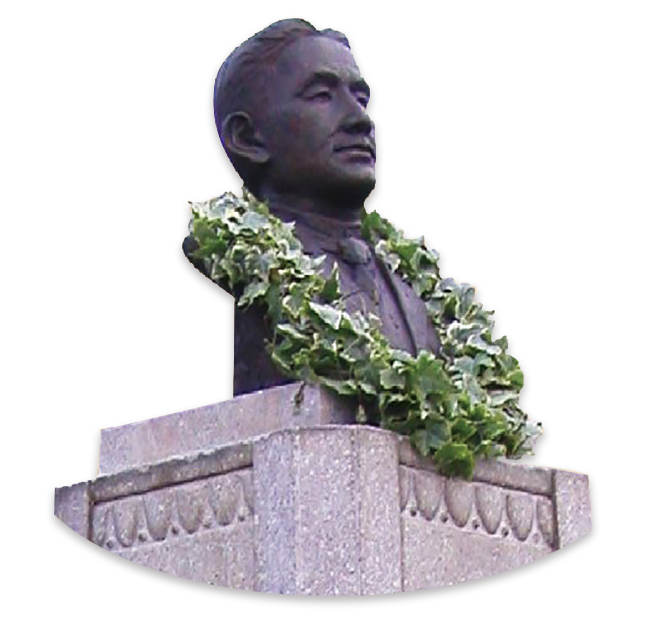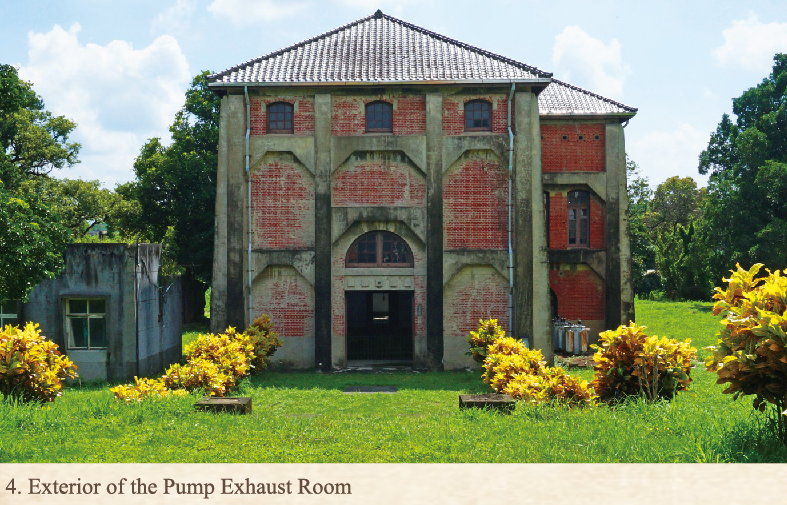Historical Background
In 1897, W. K. Burton, a sanitation technician to the Governor-General of Taiwan, and Hamano Yashiro started an investigation of the water resources and water quality in Tainan. Later, the Old Tainan Watercourse project was launched in 1912, which took 10 years to complete.
Zeng-wen River is the source of the Old Tainan Watercourse. Water was first pumped into a sedimentation pond and then transferred to a purification room. After the addition of some medicaments such as alums, the water then was pumped into the Shan Shang Water Purification Pond for storage. Finally, the clean water was supplied throughout Tainan through a gravity water system.
After World War II, Wu-shan-tou Reservoir and Zeng-wen Reservoir were decommissioned one after the other, together with many of their old facilities. With the establishment of the Taiwan Water Corporation in 1974, water resource sites came under the management of the corporation. Later, all the remaining facilities and buildings were decommissioned in 1981.
The Old Tainan Watercourse signaled the development of modem water purification engineering during the Japanese colonial period. Moreover, both its buildings and space design are unique. After approval at a historical site review meeting of Tainan County Government in 2002, the watercourse was designated as an official county-level historical site. In 2005, the Ministry of the Interior designated it as a national-level historical site. Later, in 2011, Tainan Municipal Administration of Cultural Heritage launched the first repair project of the Old Tainan Watercourse, focusing on the water purification pond. It was completed in 2013.

Engineer of the Old Tainan Watercourse - Hamanno Yashiro
There used to be a stone tablet and a bronze statute of Hamano Yashiro, the designer of the Old Tainan Watercourse, next to the gate of the water resource site. They were set up in memory of Hamano’s contribution to Taiwan.
After visiting the Shan Shang Water Resource Site, Shi Wen-long, chairman of Chi Mei Group, made a commitment to replace the bronze statue in honor of Hamano’s contribution to the water resources in Taiwan. The new bronze statue was installed at its original location on May 16, 2005.
The Layouts of the Water Resource Site and Water Purification Pond
The Old Tainan Watercourse was divided into two main parts: the water resource site and the water purification pond. In the water resource section, the filtration room and the office created an L-shapcd connection to the old inspection room. Heading eastwards, one can see the pump exhaust room, the second pump well, the chimney base, the quick-filtering room, the stone tablet and bronze statue of Hamano Yashiro, the entrance pillars, and several old trees. The facilities located in the water purification pond section are: the water purification well, the water purification pond, the water quality inspection room, a large stairway with over 180 steps, and the water measurement room.

2. Filter Room and Watercourse Office 3. Pump Exhaust Room
4. Hamano Yashiro stone tablet and bronze statue
5. Quick Filter Pond Room
6. The Old Lotus Pond
7. Luchu Pine Planted by a Crown Prince of Japan
8. Gate of the Water Resource Site
9. Nursery Office
10. Water Purification Pond Path
11. Water Purification Pond
Beauty of the Historical Architecture
The planning, design, and construction of the Old Tainan Watercourse focused on the mechanical aspects of its architecture and buildings. However, it is also an amazing artistic achievement.
(1) Entrance Pillars
The gate of the Shan Shang Water Resource Site in the Japanese colonial period was situated beside the current Tainan City Road 178. Nowadays, the 4 stone pillars still stand at the same location. The sign of the parallel rows of coconut trees on both sides of the road leading from the main gate was a unique feature of important buildings of the Japanese colonial era.
(2) Quick Filter Pond Room
The Japanese style quick filtering pond to the right of the gate was built in 1952. One floor is at ground level and the other is underground, while the outside structure is covered by a layer of cement mortar. The function of the room is for quick filtering source water. Although the pipeline in the basement still remains, it no longer functions.

(3) Filter Room and the Watercourse Office
The filter room and the watercourse office are located together in one building. The building is mainly constructed of bricks, with a wooden roof. The filter room is equipped with 14 complete sets of British-made fast filtering machinery. The office is for staff to work and operate.

(4) Pump Exhaust Room and Pump Facilities
The external building structure is the same as that of the filter room and the watercourse office. The interior has high ceilings and a special mechanism for opening and closing the windows. Some large machines, such as the four pumps and a skid crane, are still on the site. The workspace area remains unchanged.

(5) Purification Water Pond and the Large Stairway
The purification water pond is on the hill across from the water purification plant. It takes more than 180 steps up a stairway to reach it. The exterior of the grey building is the combination of natural stone and stone imitation material, which makes the building look like an ancient fortress.

(6) Water Measurement Facilities Room
The room is located in front of the large stairway. The outside is red brick, and although it is a small building, it has an elegant style. There used to be a water measurement machine that measured the water dispatch amounts.
(7) The Mark of Nan Shui
On the center of the door, there is a round cement mark with the words “Nan Shui” written on it. The two characters “Nan Shui” refer to the Old Tainan Watercourse and explain the glorious history of the watercourse.

Rich and Comprehensive Animal and Plant Ecology
For the reason that it is a highly protected water resource area, the site is also a rich ecological environment that provides an excellent habitat for both animals and insects.
Plant Ecology
According to an investigation, there are over 87 kinds of plants in the water purification pond area, mainly Taiwan Acacia and bamboo. In addition, camphor trees, Chinese podocarpus, wax apple trees, and longan trees surround the water resource site. According to the number of tree rings, most of the trees here are more than 70 years old. Among all the trees, the most special ones are the Chinese podocarpus, which are planted around both the filter room and the watercourse office. There are several Lucliu Pines. It is said that a crown prince of Japan planted them long time ago.
Animal Ecology
Within this area, there are 44 species of birds, 40 species of insects, 4 species of amphibians, 10 species of reptiles, and 3 species of mammals. The gorsachius melanophus which can be seen here are the only species of forest egrets in Taiwan. The crested goshawk is a level-2 protected bird. The euryoecic species here is mainly vitro pulsatilla. Most of the insects that can be seen here are butterflies, yet people can also enjoy the beauty of fireflies at night. The species of fireflies seen here is the lychnuris analis.
In the water purification pond, one can also see Taiwan leaf-nosed bats. These nocturnal bats are exclusive to Taiwan and eat insects. This species migrates to other areas for the winter, so it can only been seen in summer. Moreover, this kind of bat is very sensitive. Therefore, we need to ask all visitors’ help not to make too much noise or use a flash when taking pictures. It takes a concerted effort to protect bats’ natural habitat.

Sitemap
TThe website has been designed with accessibility in mind, and uses Accesskeys to make browsing more convenient.
The Accesskeys used by this site are designated as follow:
- Alt + T:Upper block, containing the links to the services of this site, search box, font size setting and versions of this site.
- Alt + C:Center block, providing the principal information of the page.
- Alt + Z:Block the link below, this website links and other contact information and so on.
- Alt + U:Switch font size.


